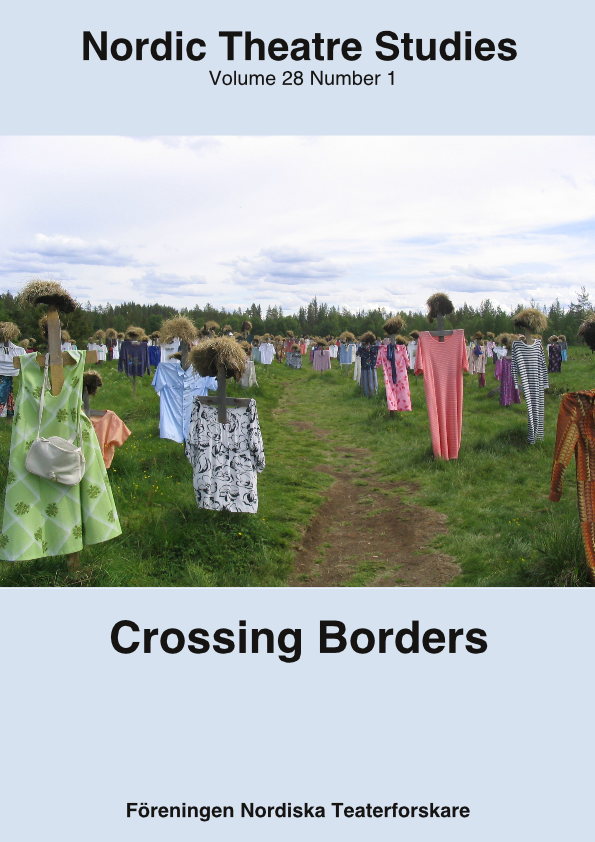Entertainment as a Complex Form of Communication. Two Examples of Hemsöborna.
DOI:
https://doi.org/10.7146/nts.v28i1.23974Keywords:
Entertainment, communication, Strindberg, HemsöbornaAbstract
An increasing interest in popular culture, entertainment, and leisure studies has resulted in a more thorough discussion of entertainment and its function in everyday life. That entertainment needs to be studied on its own terms, and not just in relation to some other area, is important. Instead of viewing entertainment as merely something connected with enjoyment and pleasure, the article looks at how entertainment renegotiates vital questions and topics from everyday life through its performance practice. Entertainment is used as an enhanced awareness, a de-familiarization, illustrating the function of different norms.
The article examines two different scenes from two different productions of August Strindberg’s novel The People of Hemsö. The first analyses the arrival of an outsider, coming from the mainland to the archipelago. The second underlines the seriousness of gender inequality. Both examples stress the importance of studying how entertainment functions as a specific performance style/practice that re-negotiates the content being communicated.
References
Stephen Bates & Anthony J. Ferri, "What's Entertainment? Notes Toward a Definition" in Studies in Popular Culture, Fall 2010, 33.1.
Michael Billig, “Comic Racism and Violence”, Beyond a Joke. The Limits of Humour, ed. Lockyer & Pickering, Palgrave Macmillan, Basingstoke 2005.
Michael Billig, Laughter and Ridicule. Towards a Social Critique of Humour, SAGE, London 2005.
Michael Billig, “Humour and Embarrassment. Limits of ‘Nice-Guy’ Theories of Social Life”, in Theory, Culture & Society, October 2001, vol. 18 no. 5.
Noël Carroll, Humour. A very short introduction, Oxford University Press, Oxford 2014.
Simon Critchley, On Humour, Routledge, London 2002.
Richard Dyer, Only Entertainment, 2 ed, Routledge, London 2002, p. 1.
Toril Moi “Thinking Through Examples: What Ordinary Language Philosophy Can Do for Feminist Theory” in New Literary History, 2015, Vol. 46, Iss. 2.
Richard Shusterman, “Entertainment: A Question for Aesthetics”, in The British Journal of Aesthetics, 2003, vol. 43, iss. 3.
August Strindberg, The People of Hemsö, transl. Elspeth Harley Schubert, Bonnier, Stockholm 1959.
Robert W. Witkin, Adorno on Popular Culture, Routledge, London 2003.
Peter Vorderer, “It's All Entertainment—Sure. But What Exactly is Entertainment? Communication Research, Media Psychology, and the Explanation of Entertainment Experiences” in Poetics, 2001, vol. 29, iss. 4.
Downloads
Published
How to Cite
Issue
Section
License
The copyright belongs to the authors and Nordic Theatre Studies. Users can use, reuse and build upon the material published in the journal but only for non-commercial purposes. Users are allowed to link to the files, download the files, distribute the files on a local network (preferably by links), upload the files to local repositories if their institutions require them to do so, but not republish the files without proper agreements with the journal and the author.

